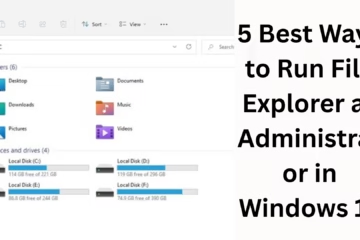Google Chrome is the most popular web browser in the world, and we often use Chrome Extensions to enhance its functionality. But sometimes there are some extensions that do not get uninstalled, no matter how hard we try. Such extensions can slow down the browser’s speed, put privacy at risk, or display constant pop-ups. In this article, we will learn in detail how to completely remove such stubborn Chrome extensions.
How to uninstall Chrome Extension in a normal way
First of all, it is essential to understand that extensions can sometimes be removed in a normal manner. If you haven’t tried this yet, do this first:
1. Open Chrome browser
2. Type this in the address bar: `chrome://extensions/`
3. You will see a list of all installed extensions
4. Click the Remove button below the extension you want to remove
5. Click “Remove” again in the confirmation dialog
If this removes the extension, the problem is solved. But if this method doesn’t work, try the advanced solutions below.
1. Turn off Background Extension from Task Manager
Some extensions keep running in the background, and that is why it is not possible to remove them.
Steps:
Open Chrome and press `Shift + Esc`
Chrome’s Task Manager will open
Here you will see a list of all the active extensions
Click on the extension you want to remove
Click on End Process
After this, you can try to remove it by going to `chrome://extensions/`.
2. Remove Extensions by running Chrome in Safe Mode (Incognito)
Some extensions protect themselves in normal mode, but they are not active in Incognito Mode. So:
Open a new Incognito Window in Chrome (`Ctrl + Shift + N`)
Open `chrome://extensions/`
Now, check if the Remove button is working
If the Remove button is enabled, remove the extension from there.
3. Force Delete Extensions Using Developer Mode
From Developer Mode, you can access the installation directory of the extension.
Steps:
Go to `chrome://extensions/` in Chrome
Turn on Developer Mode (the switch is at the top-right of the page)
Now, the ID of each extension will be visible below it
Go to Windows Explorer:
`%LOCALAPPDATA%\Google\Chrome\User Data\Default\Extensions\`
There will be a folder named after the extension’s ID
Delete that folder
Then restart Chrome
4. Remove Malicious Extensions from Registry Editor (with caution)
If an extension is behaving like a virus and installing itself repeatedly, it may have created an entry in the Windows Registry.
Steps:
Press `Windows + R`, and type `regedit`
Go to the below path:
`HKEY_LOCAL_MACHINE\SOFTWARE\Policies\Google\Chrome\ExtensionInstallForcelist`
Delete the suspicious entries seen there
Restart the system and then open Chrome
Note: Wrong changes in the Registry Editor can damage the system. Be careful.
5. Completely reset or reinstall Chrome
If all the above methods are not working, then Chrome may have to be completely reset or uninstalled.
Chrome Reset:
Open Chrome
Settings > Reset and clean up > Restore settings to their original defaults
Click on Reset Settings
Chrome Reinstall:
Control Panel > Programs > Uninstall a program
Uninstall Chrome
Completely delete the `%LOCALAPPDATA%\Google\Chrome\` directory
Download Chrome again from [Chrome’s official website](https://www.google.com/chrome/)
6. Use an Anti-Malware Tool to Remove Malicious Extensions
Sometimes extensions are not normal software, but Adware or Spyware. In such a case, use a good Anti-Malware tool like:
Malwarebytes Anti-Malware
AdwCleaner
HitmanPro
After scanning with these tools, you can get information about the extensions or their files hidden in Chrome.
7. Inspect Chrome Policies and Group Policy Editor (Advanced Users)
If you are using Windows Professional or Enterprise, some extensions may be forcibly installed on your system by Group Policies.
Steps:
Press `Windows + R` and type `gpedit.msc`
Navigate to:
`Computer Configuration > Administrative Templates > Google > Google Chrome > Extensions`
Check if any policy is forcing you to install an extension
If yes, disable that policy
Do this after removing Chrome Extensions
Completely close and restart Chrome
Open `chrome://settings/cleanup` and run Chrome Cleanup Tool
Restart your system as well
Conclusion
Chrome Extensions that are not being removed can pose a threat to your security, browser speed, and user experience. By carefully following the steps mentioned above, you can completely remove any stubborn extension from the system. We recommend that you always download extensions from a trusted website or the Chrome Web Store and keep reviewing them from time to time.
Want to grow your website organically? Contact us now
Frequently Asked Questions (FAQ): Common queries related to Chrome Extensions that won’t uninstall
Q1: Why is it so difficult to remove some Chrome extensions?
A: Some extensions set themselves up as malware or policy-controlled software in the system. They remain active in the background or add entries to the registry and group policy, making it impossible to remove them in the normal way.
Q2: What difference does it make if you remove a Chrome Extension in Safe Mode?
A: Most extensions are automatically disabled in Safe Mode or Incognito Mode. This makes the Remove button work, and you can easily remove that extension.
Q3: What is Developer Mode, and how does it help?
A: Developer Mode helps in showing the installation directory and ID of Chrome extensions. This allows you to manually identify the files and delete them from the system.
Q4: Is it safe to remove extensions using Registry Editor?
Answer:
If done carefully, yes, this is an effective method. But deleting the wrong registry entry can cause system crashes or application errors. Therefore, this method is only suitable for advanced users.
Question 5: Will completely resetting Chrome remove all extensions?
Answer:
Resetting removes most extensions, but some malicious or policy-based extensions may remain. In such cases, a reinstall or anti-malware scan is required.
Question 6: Can all extensions be removed with an anti-malware tool?
Answer:
If the extension is some kind of adware, spyware, or virus, a good anti-malware tool can identify and delete it. This method is especially effective for suspicious and unwanted extensions.
Question 7: What is Chrome Group Policy, and how does it affect extensions?
Answer:
In Windows, IT Admins can force install some extensions that cannot be removed by the general user through Group Policy. In this case, they can only be removed through the Group Policy Editor.












